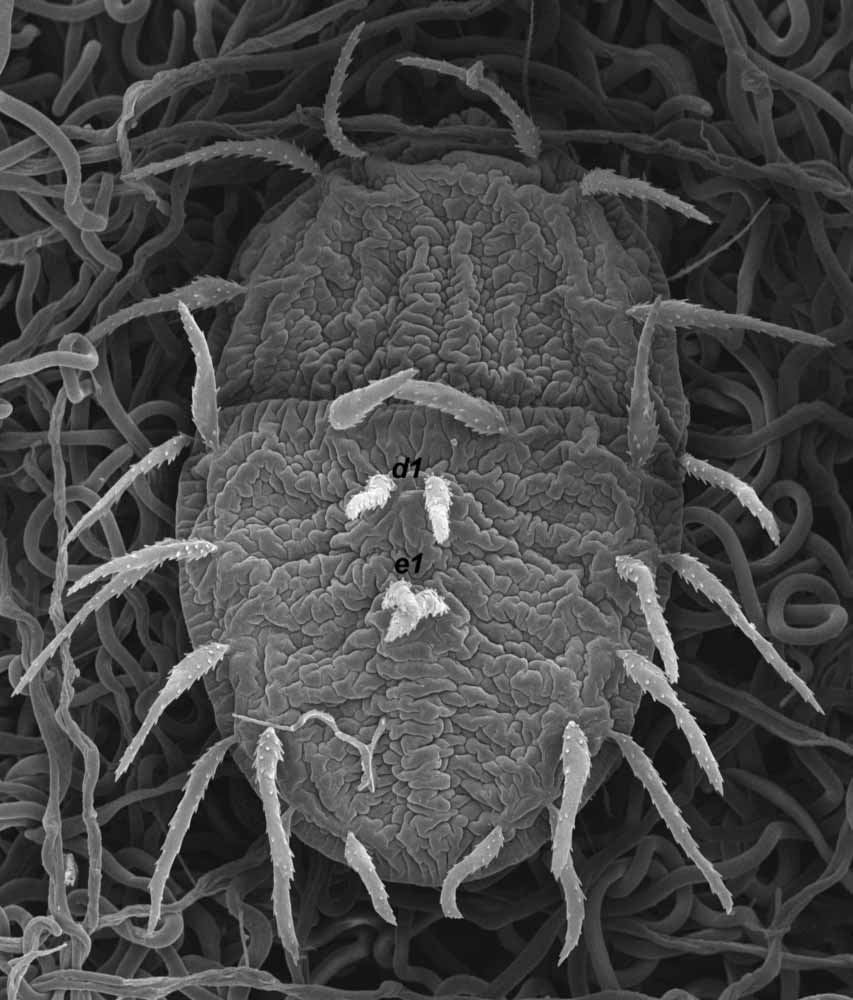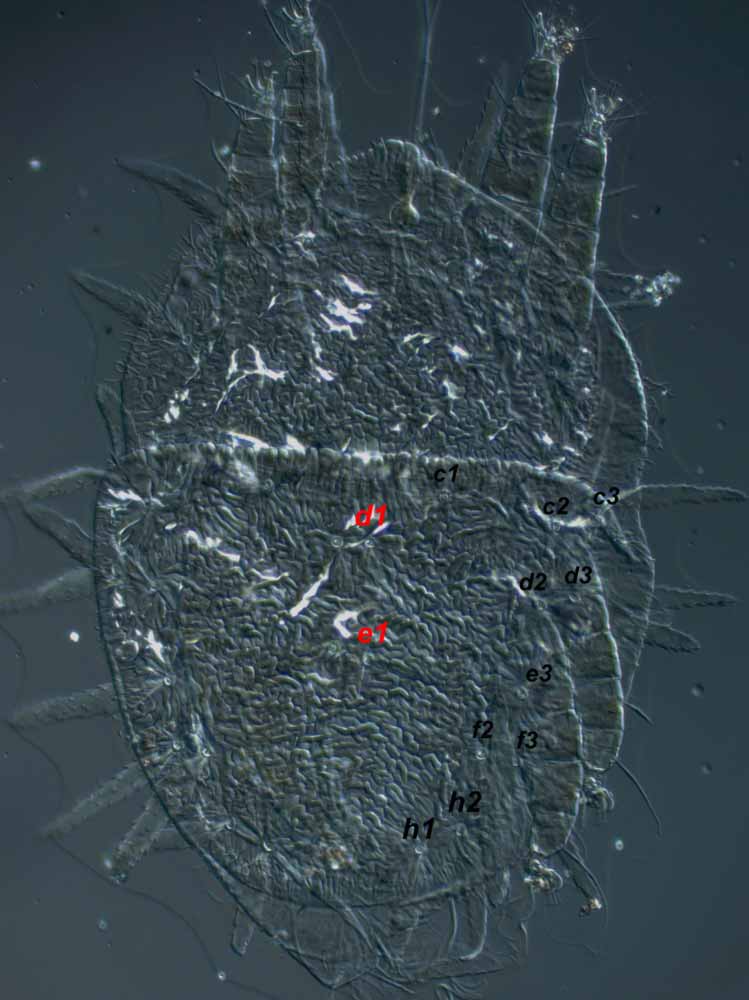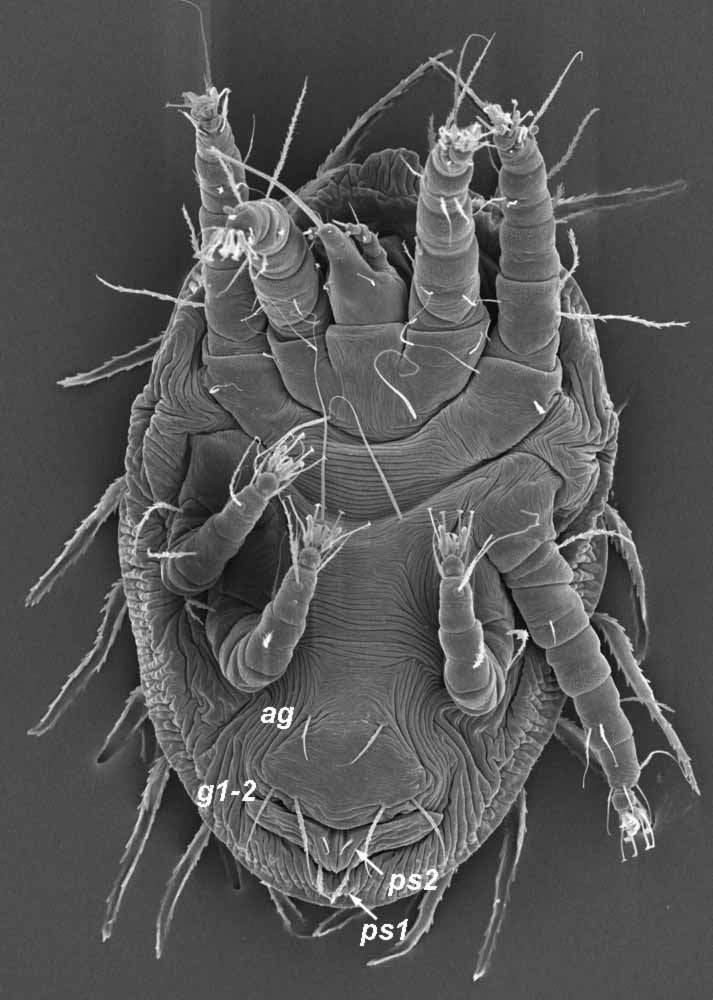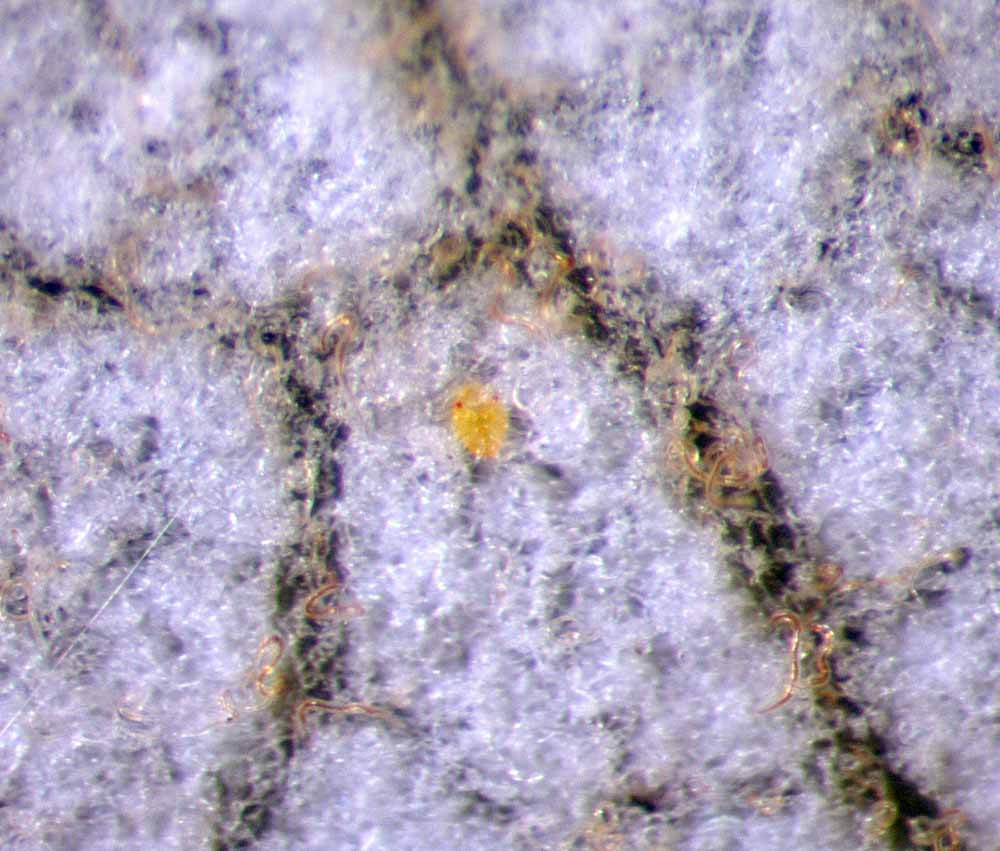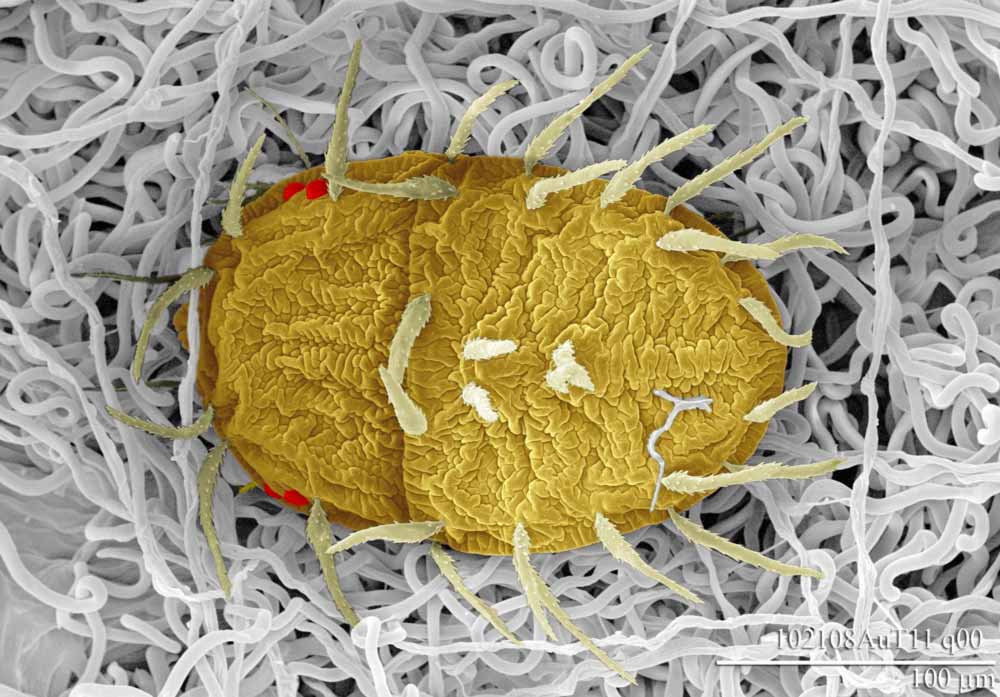Australopalpus
|
Fig. 1. Australopalpus alphitoniae female dorsum (image: Gary Bauchan, USDA-ARS). |
|
Fig. 2. Australopalpus alphitoniae female dorsum (type specimen). |
|
Fig. 3. Australopalpus alphitoniae female venter (image: Gary Bauchan, USDA-ARS). |
|
Fig. 4. Australopalpus alphitoniae female live, on lower surface of Alphitonia excelsa leaf. |
|
Fig. 5. Australopalpus alphitoniae female dorsum (image: Gary Bauchan & Chris Pooley, USDA-ARS). |
Key characters
- dorsal setae long, flat (Figs. 1, 2)
- bases of d1, e1 almost touching (Fig. 1)
- e2 absent
- h2 not elongate
- anterior margin of prodorsum smoothly rounded, without notch or projection; partially concealing gnathosoma
- ventral and genital plates membranous, not well developed
- anal plates distinct (Fig. 3)
- 2 pairs ps setae (Fig. 3)
- intricate pattern on dorsal cuticle (Figs. 1-2, 5)
- 5 segmented palp
Number of species
One - A. alphitoniae
Authority
Smiley and Gerson
Distribution
Australia
Hosts
Alphitonia excelsa (Rhamnaceae)
Same host as Lisaepalpus smileyae
Colour
- yellow when alive, with white setae (Figs. 4, 5)
- eggs yellow to orange

